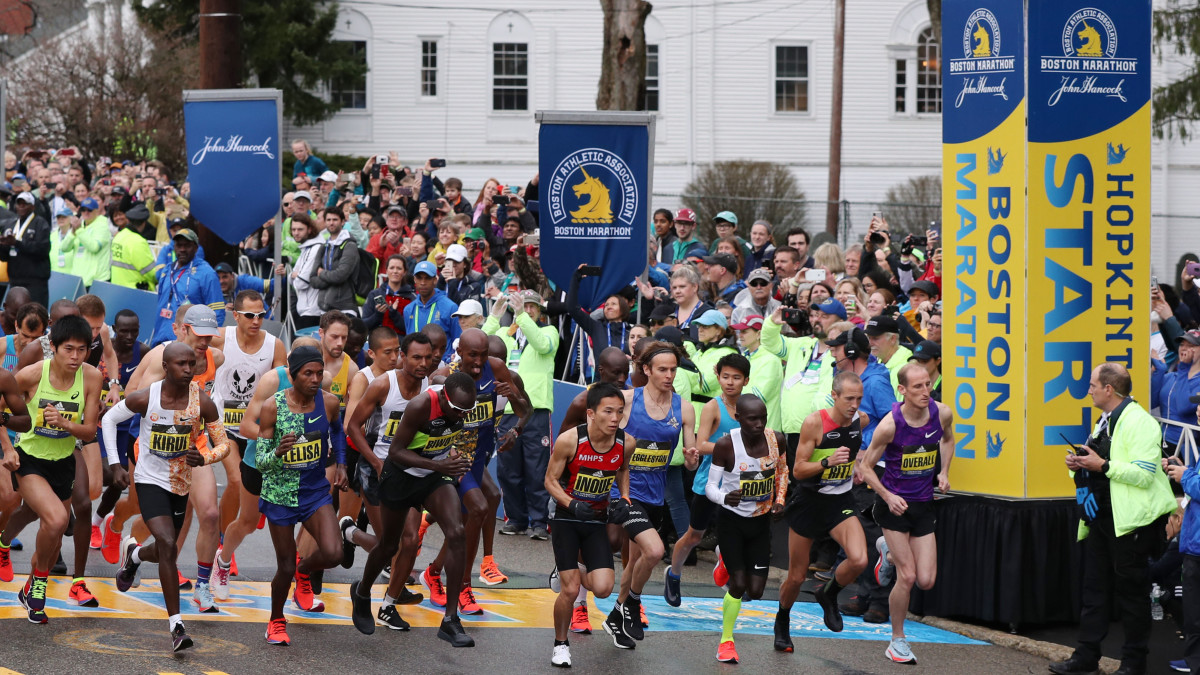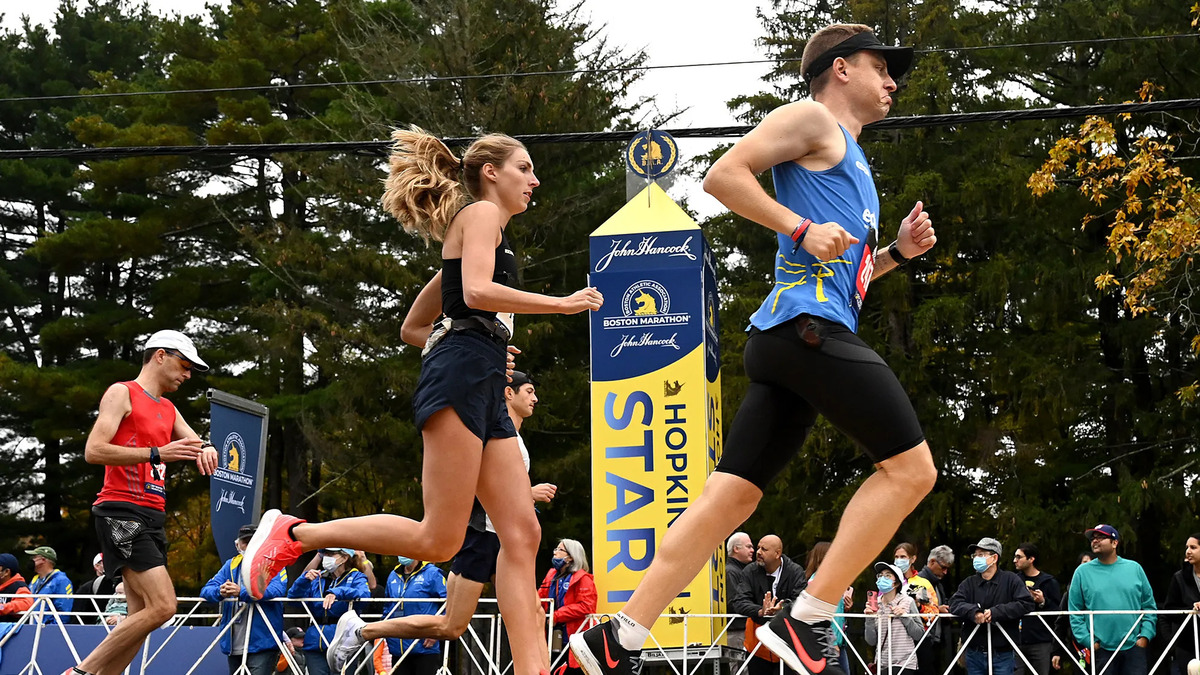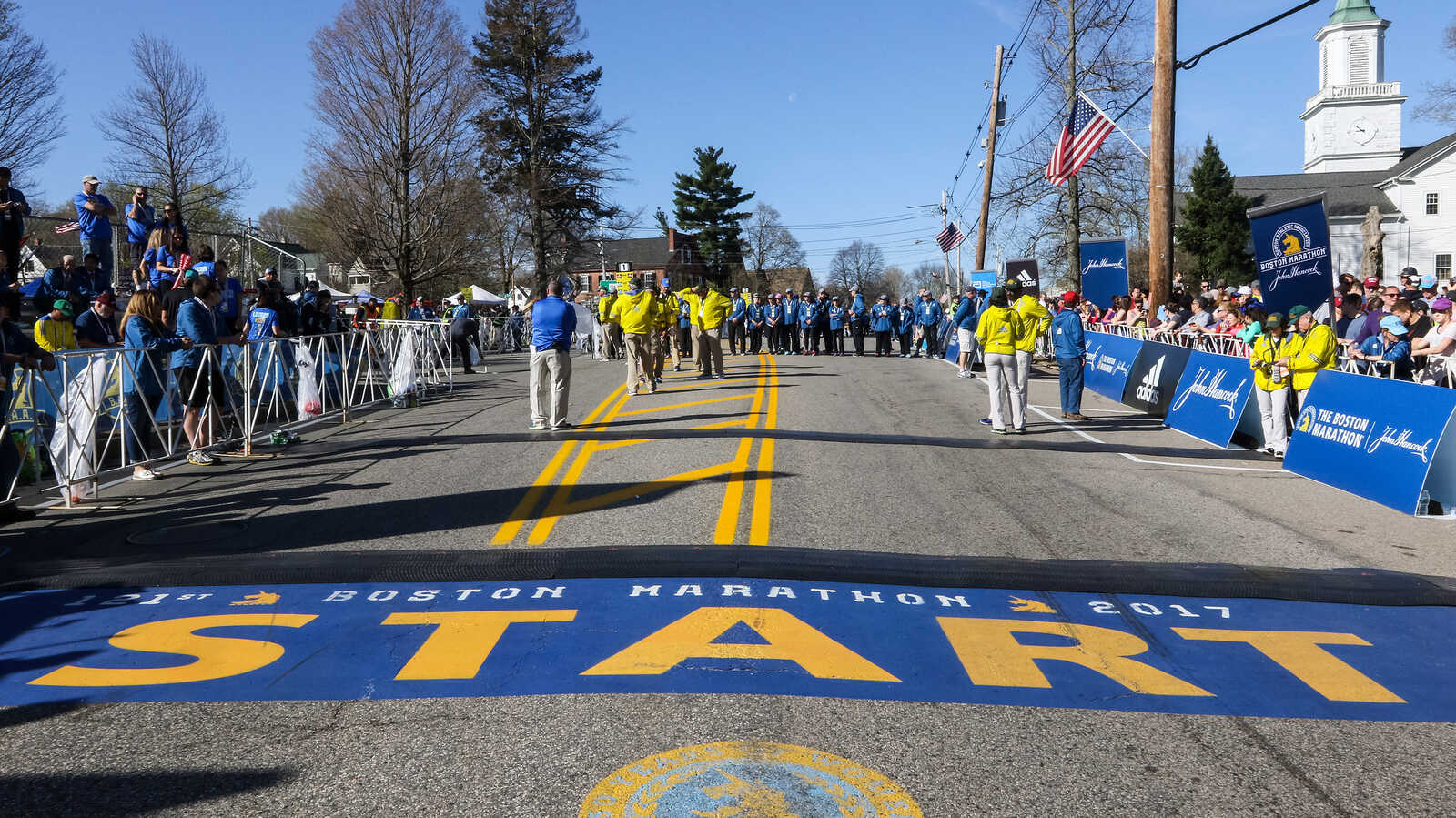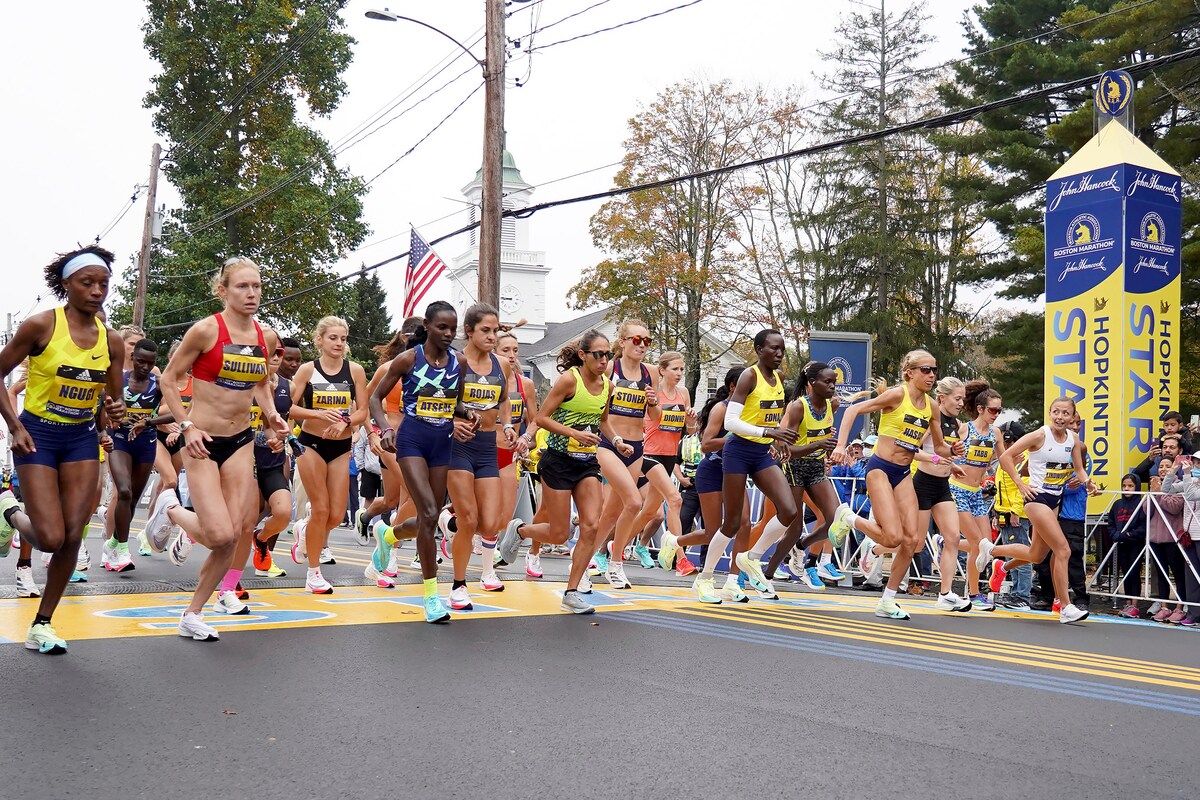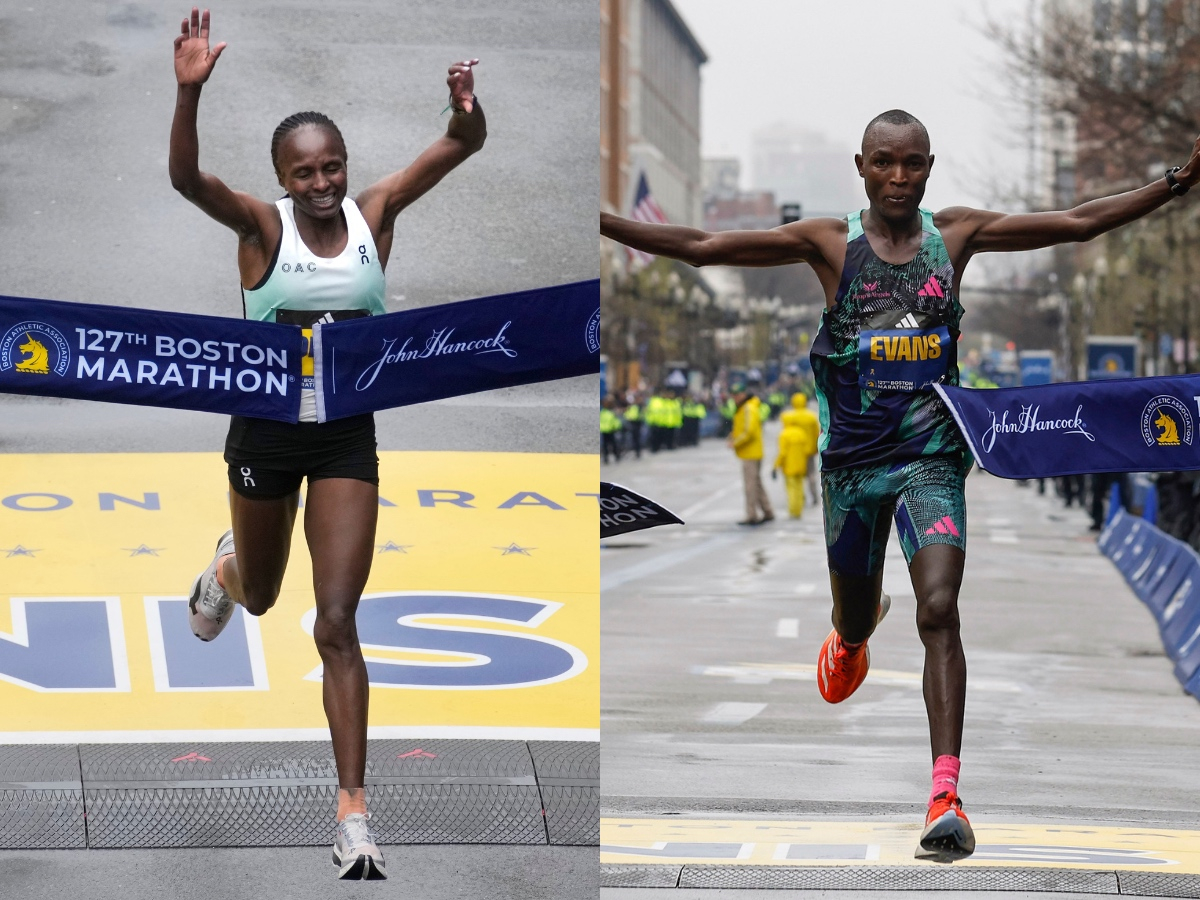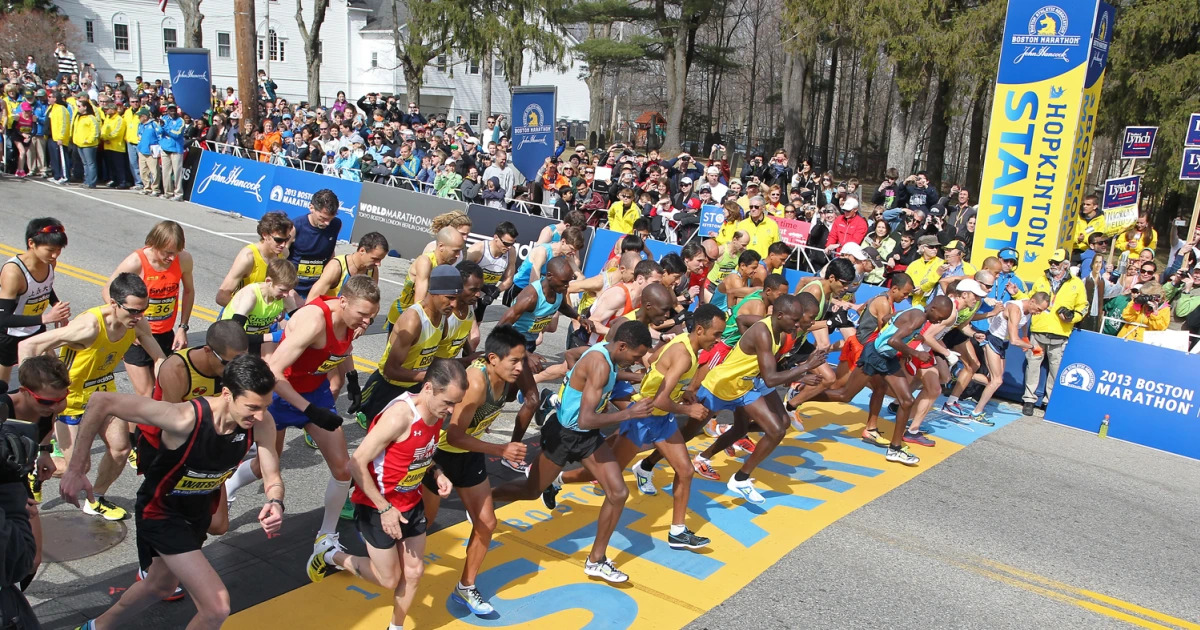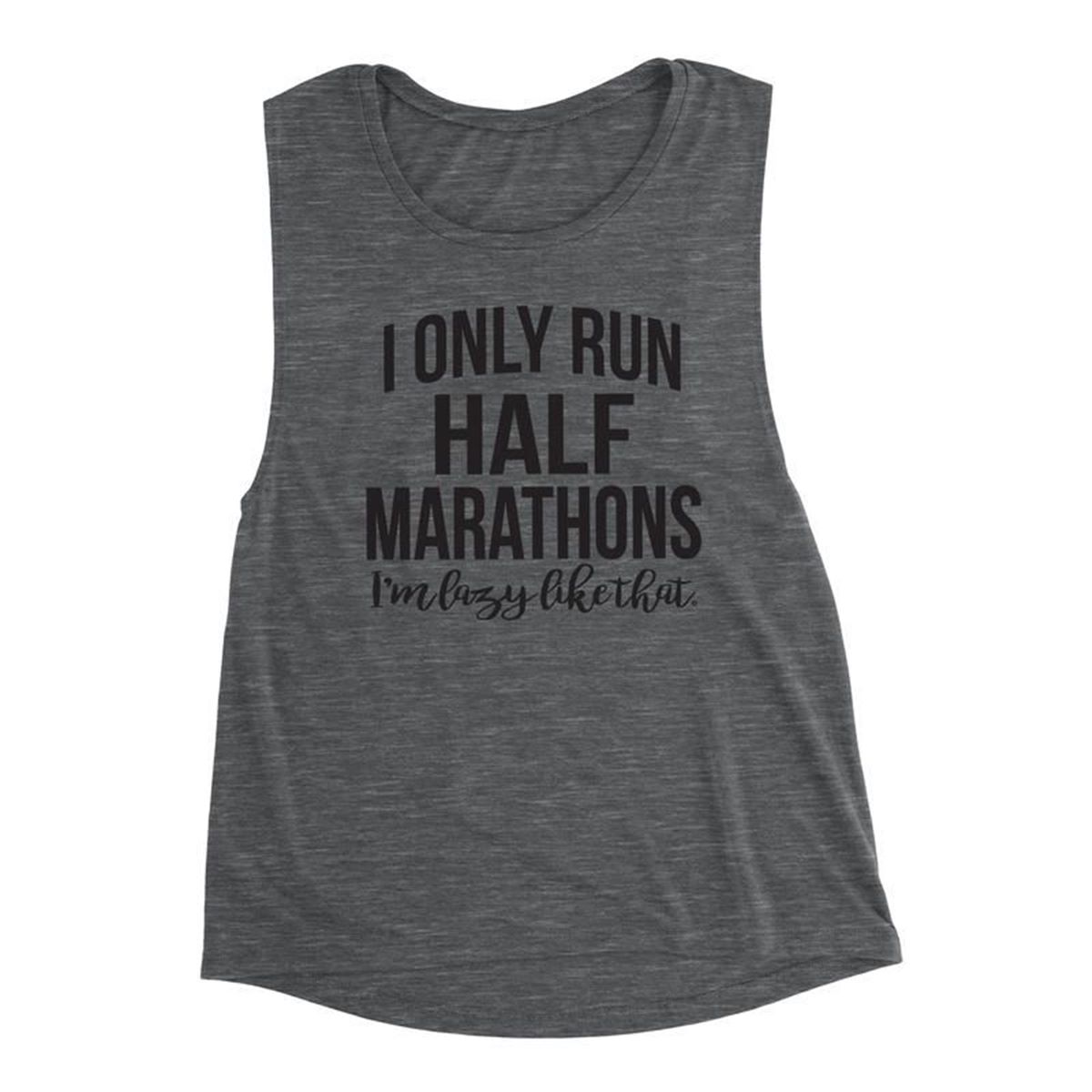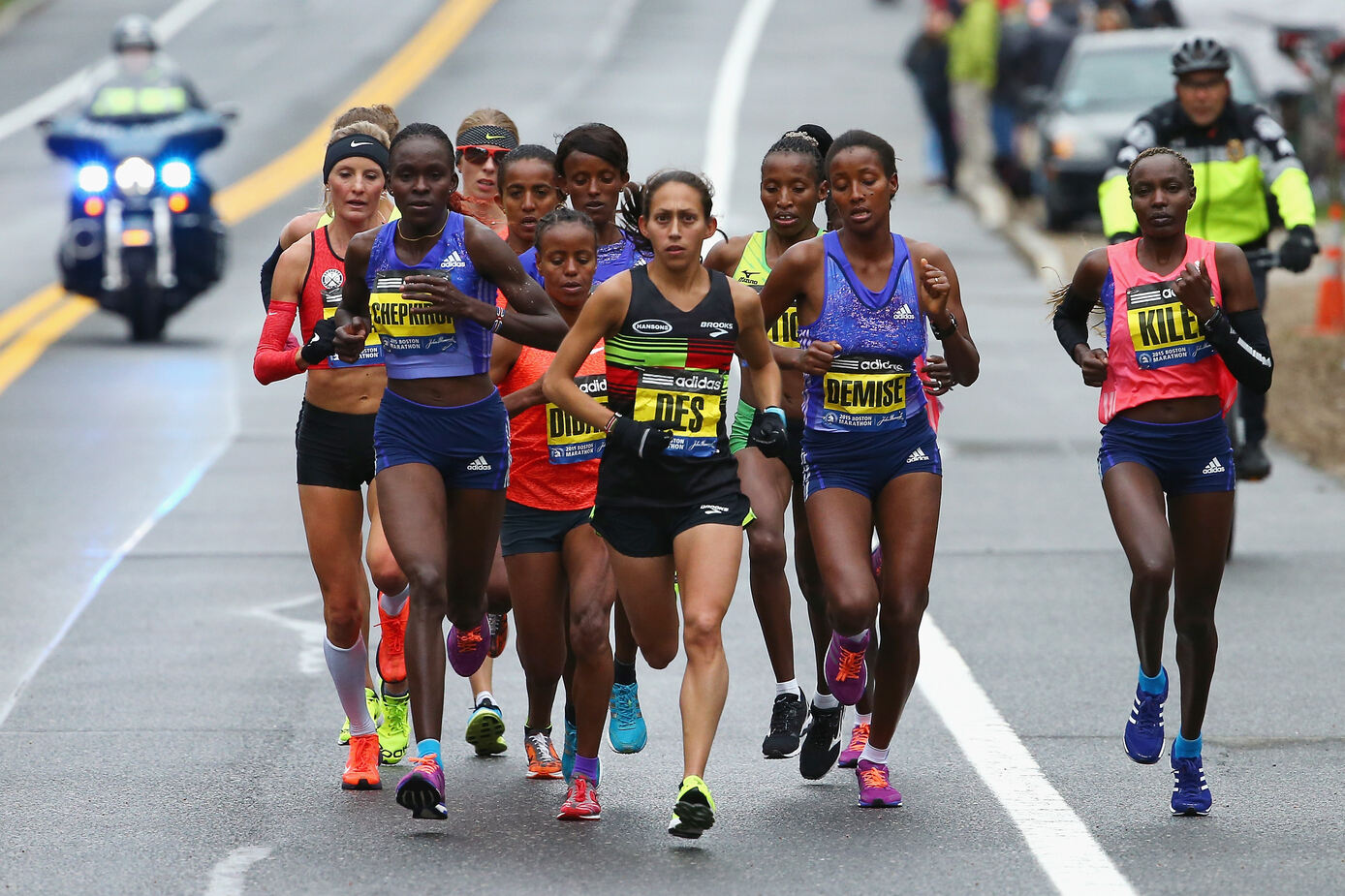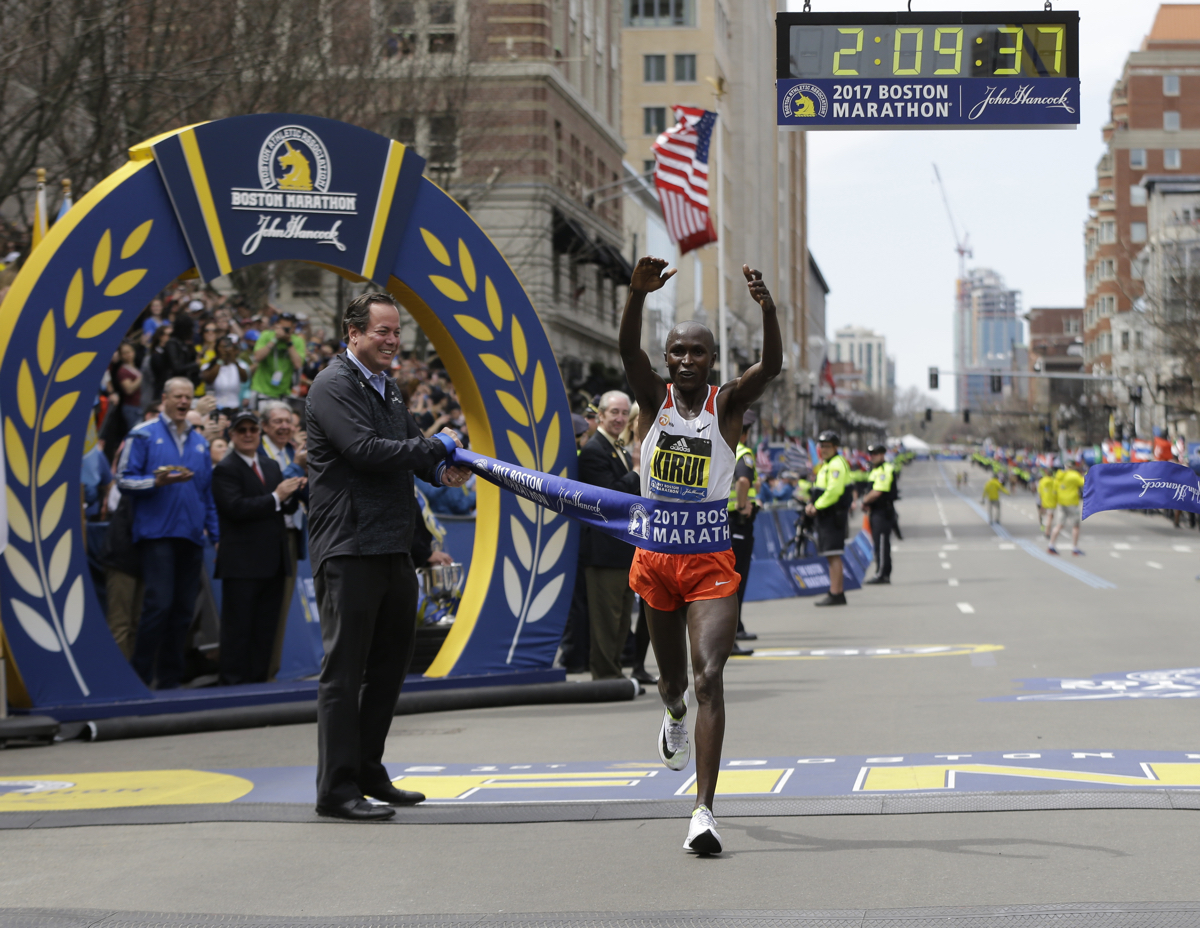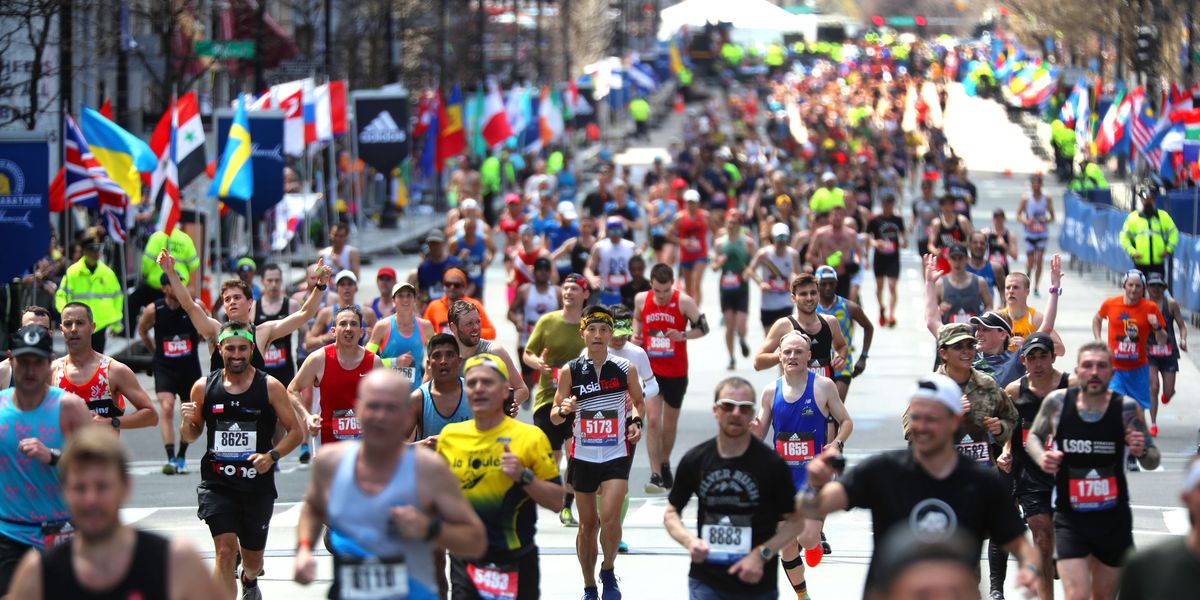Home>Misc>Featured>How To Run Boston Marathon Without Qualifying
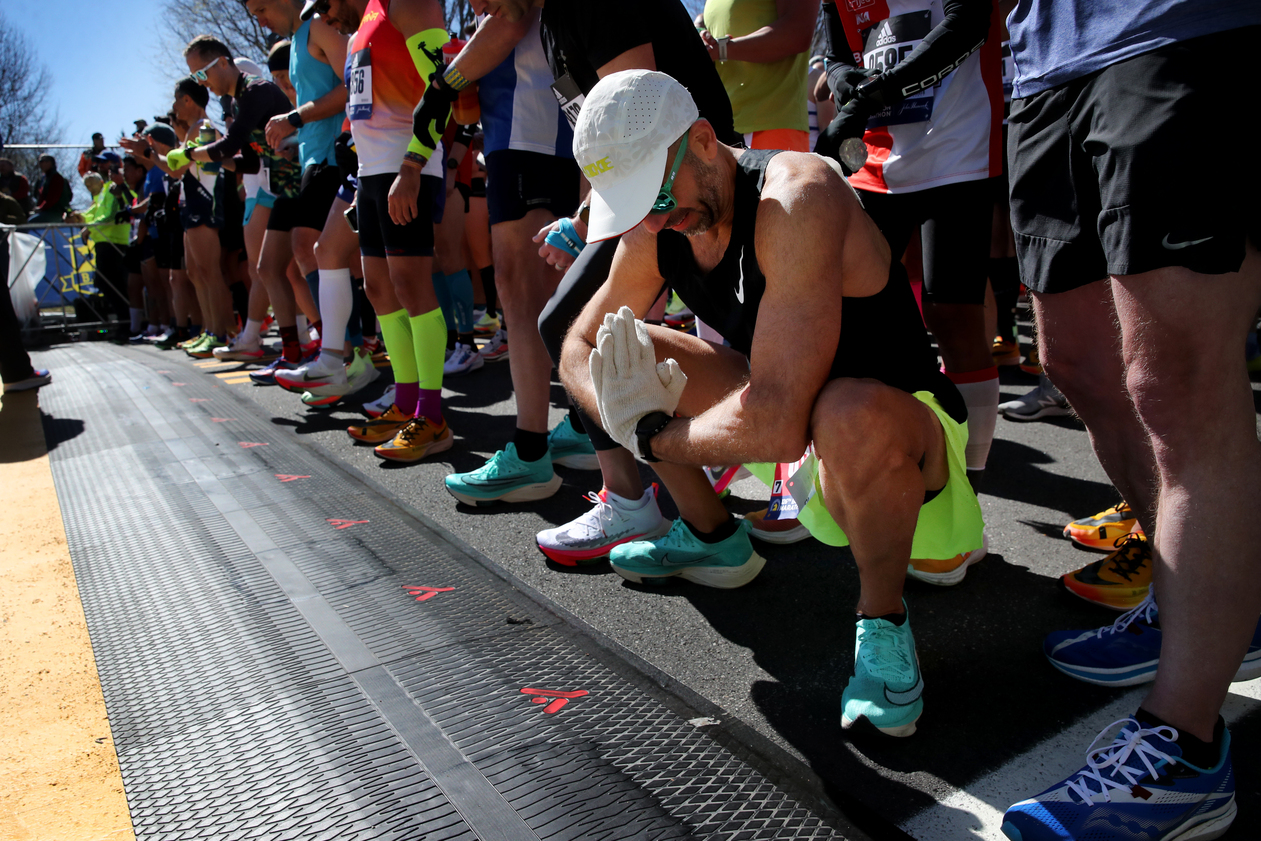

Featured
How To Run Boston Marathon Without Qualifying
Modified: January 2, 2024
Learn how to run the Boston Marathon without qualifying. Discover the secrets and strategies to become a featured participant in this iconic race.
Introduction
Welcome to the world of marathons where endurance, determination, and the pursuit of personal goals collide. One of the most prestigious and sought-after marathons in the world is the Boston Marathon. Known for its rich history, challenging course, and stringent qualifying standards, the Boston Marathon is a dream for many runners.
However, not everyone meets the qualifying criteria set by the Boston Athletic Association (BAA) to participate in the race. The qualifying standards, based on age and gender, require runners to achieve a certain time in a certified marathon. For those who fall short of these requirements, it might seem like the dream of running the Boston Marathon is out of reach.
But fear not! There are still alternative ways to experience the thrill and excitement of the Boston Marathon without having to qualify. In this article, we will explore various strategies and opportunities that non-qualified runners can pursue to participate in the Boston Marathon.
Whether you’re a seasoned runner looking to conquer a new challenge or a passionate individual inspired by the spirit of the Boston Marathon, there are avenues available to make your dream a reality. By thinking outside the box and exploring different options, you can find a pathway to the Boston Marathon that suits your goals and aspirations.
Now let’s delve into the various approaches that non-qualified runners can take to enter the prestigious Boston Marathon.
Understanding the Boston Marathon Qualifying Standards
The Boston Marathon is known for its rigorous qualifying standards, which are based on age and gender categories. To participate in the race, runners must achieve a specific qualifying time in a certified marathon. These standards are set by the Boston Athletic Association (BAA) and are designed to ensure that participants have the necessary fitness and running abilities to tackle the challenging Boston Marathon course.
The qualifying standards for the Boston Marathon vary depending on age and gender. The times required to qualify have become increasingly competitive over the years, reflecting the popularity and prestige of the race. For example, the qualifying time for men aged 18-34 is 3 hours and 5 minutes, while the qualifying time for women in the same age category is 3 hours and 35 minutes.
It’s important to note that just meeting the qualifying standard does not guarantee entry into the Boston Marathon. Qualified runners are still subject to acceptance based on the number of applicants and available spots in their respective age and gender categories. As the race has gained popularity and demand has increased, the acceptance rate for qualified runners has become more competitive.
The qualifying window for the Boston Marathon typically opens about a year before the race day. Runners must complete a certified marathon within a specific timeframe to be eligible for qualification. It’s essential to carefully review the BAA’s guidelines and rules regarding qualifying standards to ensure you meet the necessary criteria.
Understanding the qualifying standards is crucial for non-qualified runners who aspire to participate in the Boston Marathon. It provides a benchmark for assessing one’s current running abilities and setting realistic goals for improvement. Even if you don’t meet the qualifying standards initially, having a clear understanding of the requirements can help you identify alternative paths to enter the Boston Marathon.
Now that we have a basic understanding of the qualifying standards, let’s explore the various strategies and options available for non-qualified runners to participate in the Boston Marathon.
Finding Alternative Ways to Enter the Boston Marathon
If you don’t meet the Boston Marathon qualifying standards, there are still alternative paths that can lead you to the starting line. The Boston Marathon offers several opportunities for non-qualified runners to participate and experience the race day festivities. Let’s explore some of these options:
1. Joining a Charity or Fundraising Team: Many charitable organizations have partnerships with the Boston Marathon, allowing individuals to run and raise funds for a worthy cause. By committing to a fundraising goal, you can secure a spot in the race while making a positive impact on the community.
2. Participating in a Recognized Race Series: The Boston Marathon recognizes certain race series as qualifiers for entry. By completing a specific number of races within the series and meeting their qualifying standards, you can earn a spot in the Boston Marathon.
3. Running for a Supporting Organization or Local Club: Some organizations and local running clubs have affiliations with the Boston Marathon, granting their members the opportunity to run as part of their team. Connecting with these groups can enhance your chances of securing a spot in the race.
4. Entering through the Bib Exchange or Transfer Program: The Boston Marathon allows registered runners to transfer their bibs to others who haven’t qualified. Participating in the official bib exchange or transfer program can be a way to secure a spot in the race.
5. Running as a Volunteer or through a Community Challenge: The Boston Marathon organizes volunteer initiatives and community challenges that provide non-qualified runners with opportunities to run a portion of the course on race day. While not a full marathon, these programs allow you to be a part of the Boston Marathon experience.
It’s important to note that each alternative method has its own requirements, deadlines, and selection processes. It’s crucial to thoroughly research and understand the guidelines set forth by the Boston Marathon and the respective organizations involved.
By exploring these alternative ways to enter the Boston Marathon, you can turn your dream into reality, regardless of your initial qualification status. These options provide the opportunity to experience the energy, history, and camaraderie of the Boston Marathon, while supporting a cause, participating in recognized races, or being part of a supportive community.
Now that we have explored the alternative methods, let’s delve into the training and preparation required for the Boston Marathon, so you can set yourself up for success on race day.
Joining a Charity or Fundraising Team
One of the most popular and meaningful ways for non-qualified runners to secure a spot in the Boston Marathon is by joining a charity or fundraising team. Many charitable organizations have official partnerships with the Boston Marathon, allowing individuals to run and raise funds for their cause.
By joining a charity or fundraising team, you not only get the chance to participate in the Boston Marathon, but you also have the opportunity to make a positive impact in your community. Running for a cause adds an extra layer of motivation and purpose to your training and race day experience.
Here’s how joining a charity or fundraising team works:
1. Research and Identify Charitable Organizations: Start by researching and identifying charitable organizations that have partnerships with the Boston Marathon. Look for causes that resonate with you and align with your personal values.
2. Review Fundraising Commitments: Each charity or fundraising team sets fundraising goals that participants need to meet. It’s essential to review these commitments and ensure they align with your fundraising capabilities. Some organizations have minimum fundraising requirements, while others have suggested goals.
3. Apply and Secure a Spot: Once you have identified a charitable organization that you want to run for, you need to apply and secure a spot in their team. The application process usually involves submitting an application form and expressing your commitment to fundraising for their cause.
4. Start Fundraising: After securing your spot, it’s time to start fundraising. Charitable organizations provide tools and resources to help you reach out to your network and raise funds. You can organize events, create online fundraising campaigns, and leverage your social media presence to generate awareness and support for your cause.
5. Train and Prepare: While raising funds, it’s crucial to continue with your training and preparation for the Boston Marathon. Regularly communicate with your charity or fundraising team for advice on training plans, race day logistics, and any other support they can offer.
Joining a charity or fundraising team not only gives you the opportunity to run the Boston Marathon but also allows you to make a difference in the lives of others. The sense of purpose and the support from your fellow teammates add to the overall experience, making it even more rewarding.
Remember, the charity or fundraising team will have their own guidelines and deadlines for registration, fundraising, and participation. It is important to familiarize yourself with their requirements and communicate regularly to stay on track with your fundraising goals.
Now that we have explored joining a charity or fundraising team, let’s take a look at another alternative method of entering the Boston Marathon – participating in a recognized race series.
Participating in a Recognized Race Series
For non-qualified runners who are looking to secure a spot in the Boston Marathon, participating in a recognized race series can be a great option. The Boston Marathon acknowledges certain race series as a means of qualifying for entry into the race.
Here’s how participating in a recognized race series works:
1. Research Recognized Race Series: Look for race series that are officially recognized by the Boston Marathon. These race series have specific qualifying standards that participants need to meet in order to earn a spot in the Boston Marathon.
2. Register and Participate: Once you have identified a recognized race series, register for the races within the series and fulfill their qualifying requirements. This may involve completing a specific number of races within a certain timeframe or achieving a qualifying time in each race.
3. Meet the Qualifying Criteria: It is important to rigorously train and prepare for each race in the series. Follow your training plan, focus on improving your speed and endurance, and ensure that you meet the qualifying criteria set by the race series.
4. Submit Proof of Qualification: Once you have completed the required races and achieved the qualifying times, submit your results and proof of qualification to the Boston Marathon registration process. The Boston Athletic Association (BAA) will review your qualifications and determine your eligibility for entry.
5. Secure Your Spot: If your qualifications meet the requirements, you will be given the opportunity to register for the Boston Marathon as a participant in the recognized race series. Be sure to complete the registration process within the given timeframe to secure your spot.
Participating in a recognized race series not only provides a pathway to the Boston Marathon but also offers a structured training and racing experience. It allows you to focus on improving your performance and meeting specific qualifying criteria. Additionally, being part of a race series can provide a sense of community and camaraderie among fellow runners who share similar goals.
It is important to note that each recognized race series has its own set of qualifying standards, deadlines, and registration processes. Be sure to familiarize yourself with the requirements of the specific race series you choose and carefully adhere to their guidelines.
Now that we have explored participating in a recognized race series, let’s move on to another alternative method of entering the Boston Marathon – running for a supporting organization or local club.
Running for a Supporting Organization or Local Club
If you’re passionate about a specific cause or want to be part of a supportive running community, running for a supporting organization or local club can be a fulfilling way to secure a spot in the Boston Marathon.
Here’s how running for a supporting organization or local club works:
1. Research Supporting Organizations or Local Clubs: Look for organizations or running clubs that have affiliations with the Boston Marathon. These organizations may have reserved spots in the race or specific criteria for selecting their participants.
2. Connect with the Organization or Club: Reach out to the supporting organization or local club that aligns with your interests or values. Express your desire to run the Boston Marathon as part of their team and inquire about their selection process.
3. Demonstrate Your Commitment: Show your dedication to the organization or club by getting involved in their activities, volunteering your time, or participating in their fundraising efforts. This helps showcase your commitment and passion for the cause.
4. Apply and Secure a Spot: Once you have established a connection and demonstrated your commitment, complete the application process to be considered for a spot. This may involve submitting an application form, personal statement, or references.
5. Train and Prepare: If selected, begin training and preparing for the Boston Marathon. Engage with your supporting organization or local club for guidance on training plans, group runs, and any additional resources they offer.
Running for a supporting organization or local club adds a deeper sense of purpose and community to your Boston Marathon journey. It allows you to contribute to a cause you care about while receiving support and camaraderie from like-minded individuals.
It’s important to note that each supporting organization or local club may have specific requirements, such as fundraising commitments or volunteer hours. Be sure to understand and fulfill these obligations to maintain your eligibility.
By running for a supporting organization or local club, you not only secure a spot in the Boston Marathon but also become part of a larger community that shares your passion and goals. It’s an opportunity to make a difference while pursuing your dream of running in one of the world’s most iconic marathons.
Now that we have explored running for a supporting organization or local club, let’s dive into another alternative method of entering the Boston Marathon – the bib exchange or transfer program.
Entering through the Bib Exchange or Transfer Program
If you haven’t qualified for the Boston Marathon but still want to participate, the bib exchange or transfer program provides an opportunity to secure a spot through the transfer of bibs from registered runners who are unable to participate. Here’s how it works:
1. Explore the Official Bib Exchange or Transfer Program: Visit the official website of the Boston Marathon to find information about the bib exchange or transfer program. The program allows registered runners who are unable to race to transfer their bibs to non-qualified runners.
2. Connect with Registered Runners: Reach out to registered runners who are unable to participate to inquire about the possibility of acquiring their bibs. Online forums, social media groups, and running communities can be valuable resources to connect with runners looking to transfer their bibs.
3. Follow the Official Guidelines: Ensure that you follow the official guidelines and procedures set by the Boston Marathon for the bib exchange or transfer program. The BAA has specific requirements, deadlines, and procedures that must be adhered to for the transfer to be valid.
4. Complete the Transfer Process: Once you have found a registered runner willing to transfer their bib, complete the necessary paperwork and pay any associated fees required by the BAA. This process typically involves the transfer of the bib registration and payment.
5. Train and Prepare: Once the bib transfer is approved, shift your focus to training and preparing for the Boston Marathon. Engage in a structured training plan, focus on your fitness, and mentally prepare for the race day experience.
Entering through the bib exchange or transfer program is an option that allows you to bypass the qualification process and secure a spot in the Boston Marathon. It provides an opportunity to participate in the race alongside other qualified and passionate runners.
It’s important to be aware that the bib exchange or transfer program has its own regulations and limitations. The number of available bibs may be limited, and the process is subject to the discretion of the registered runners and the BAA. Therefore, it’s vital to be proactive in your search and stay updated with the official guidelines.
By participating in the bib exchange or transfer program, you can fulfill your dream of running the Boston Marathon and experience the iconic race day atmosphere. It’s a chance to challenge yourself, embrace the spirit of the marathon, and become part of its illustrious history.
Now that we have explored the bib exchange or transfer program, let’s move on to another alternative method of entering the Boston Marathon – running as a volunteer or through a community challenge.
Running as a Volunteer or through a Community Challenge
If you are unable to qualify for the Boston Marathon through the traditional means, there are still unique opportunities to be a part of the event. Running as a volunteer or through a community challenge allows you to experience the Boston Marathon and be involved in the race day atmosphere in different ways.
Here’s how running as a volunteer or through a community challenge works:
1. Volunteering for the Boston Marathon: The Boston Marathon heavily relies on the support of volunteers to ensure a smooth and successful event. By volunteering, you become an integral part of the race day experience. You can cheer on and support the runners from various positions along the course, assist with logistics, distribute water, or aid in other event-related tasks.
2. Participating in a Community Challenge: Local communities sometimes organize their own challenge events that coincide with the Boston Marathon. These challenges may involve completing a specific distance or a set of tasks within a given time frame. While not an official part of the race, participating in a community challenge can be a fun and inclusive way to be a part of the Boston Marathon festivities.
3. Connecting with Community Initiatives: Keep an eye out for community initiatives, such as charity runs or fundraising events, that are aligned with the Boston Marathon. These initiatives often provide opportunities for non-qualified runners to participate in a run or challenge that supports a local cause.
4. Embracing the Spirit of the Event: Regardless of whether you are volunteering or participating in a community challenge, embrace the spirit of the Boston Marathon. Immerse yourself in the race day atmosphere, cheer on the runners, and celebrate the achievements of those who have qualified. It’s a chance to be a part of a historic event and contribute to the collective energy and enthusiasm.
Running as a volunteer or through a community challenge allows you to experience the excitement and camaraderie of the Boston Marathon, even if you haven’t qualified to run the full marathon. It’s a way to contribute to the event, support the participants, and be a part of the inspiring running community.
By volunteering or participating in a community challenge, you can still engage with the race, gain a deeper appreciation for the effort and dedication required to run the Boston Marathon, and create lasting memories.
Now that we have explored the alternative methods of entering the Boston Marathon, let’s move on to discussing training and preparation for the race, including tips and strategies for non-qualified runners.
Training and Preparation for the Boston Marathon
Training and preparation are essential components of any successful marathon journey, including the Boston Marathon. Regardless of how you secure your spot in the race, it’s crucial to approach your training with dedication and a well-rounded plan. Here are some key considerations for training and preparing for the Boston Marathon:
1. Develop a Training Plan: Design a training plan that aligns with your current fitness level and takes into account the time available until race day. Focus on gradually increasing your mileage, incorporating tempo runs, long runs, and speed workouts to build endurance and improve your running efficiency.
2. Seek Expert Advice: Consider consulting with a running coach or an experienced marathoner to help create a personalized training plan. They can provide guidance on mileage, speed work, recovery, and nutrition to optimize your performance.
3. Learn the Course: Familiarize yourself with the Boston Marathon course and its unique features, such as the infamous hills like Heartbreak Hill. Incorporate hill training into your regimen to prepare your body for the challenging sections of the race.
4. Cross-Train and Strength Train: Supplement your running with cross-training activities, such as cycling or swimming, for cardiovascular fitness and injury prevention. Additionally, include strength training exercises to build muscle strength and enhance overall performance.
5. Practice Race-Day Nutrition and Hydration: Experiment with different fueling strategies during your long runs to determine what works best for you. Identify the types of energy gels, sports drinks, and snacks that provide sustained energy and practice proper hydration techniques.
6. Focus on Recovery: Allow ample time for recovery between training sessions. Incorporate rest days, stretching, foam rolling, and other recovery methods into your routine to prevent injuries and keep your body in optimal condition.
7. Simulate Race Conditions: Attempt to simulate race-day conditions during some of your long runs. Run at a similar pace to your goal race pace, practice fueling strategies, and mentally prepare yourself for the demands of the marathon.
8. Stay Consistent and Listen to Your Body: Consistency is key in marathon training, but it’s also important to listen to your body. If you’re experiencing pain or fatigue, adjust your training or seek professional advice to avoid exacerbating any potential injuries.
Training for the Boston Marathon requires discipline, perseverance, and a balanced approach to your physical and mental well-being. Remember to enjoy the journey, celebrate your milestones along the way, and stay motivated as you work towards your goal.
Now let’s move on to the next section where we’ll discuss specific tips and strategies for non-qualified runners making their Boston Marathon debut.
Tips and Strategies for Non-Qualified Runners
For non-qualified runners who have secured a spot in the Boston Marathon through alternative means, there are specific tips and strategies to enhance your preparation and make the most of your race day experience. Here are some valuable tips and strategies:
1. Embrace the Opportunity: Recognize the significance of your achievement in securing a spot in the Boston Marathon. Embrace the opportunity to be a part of this historic race and approach your training with enthusiasm and gratitude.
2. Set Realistic Goals: Determine realistic goals based on your current fitness level and training progress. Focus on personal improvement and the joy of participation rather than solely on achieving a specific time.
3. Leverage Community Support: Engage with the vibrant Boston Marathon community. Connect with other non-qualified runners, charity teams, or local clubs to share experiences, training advice, and motivation. The support and camaraderie can enhance your overall experience.
4. Familiarize Yourself with the Logistics: Understand the race logistics, including transportation, expo, start time, and corrals. Plan your travel, accommodations, and logistics well in advance to minimize any last-minute stress on race day.
5. Pace Yourself: Develop a race-day strategy that includes starting conservatively, especially considering the challenging sections of the Boston Marathon course. Pace yourself well to ensure you have enough stamina to tackle the hills and finish strong.
6. Enjoy the Atmosphere: Immerse yourself in the iconic Boston Marathon atmosphere. Soak up the energy from the cheering spectators and embrace the history and prestige of the race. Remember to enjoy every step of the journey.
7. Fuel and Hydration: Stick to your race-day nutrition plan and practice proper hydration. Familiarize yourself with the fueling stations along the course and plan accordingly. Regularly replenish your energy and stay hydrated to maintain your performance.
8. Mental Preparation: Mentally prepare yourself for the highs and lows of the marathon. Visualize success, use positive self-talk, and draw motivation from your training and the support of the Boston Marathon community.
9. Smile and Have Fun: Remember that running the Boston Marathon is a significant accomplishment. Smile, enjoy the experience, and acknowledge the hard work and dedication that brought you to the starting line.
10. Reflect and Learn: Once the race is over, take time to reflect on your Boston Marathon journey. Celebrate your achievements and identify areas for improvement. Use this experience as a stepping stone for future running endeavors.
As a non-qualified runner in the Boston Marathon, you have a unique opportunity to be a part of one of the world’s most prestigious marathons. Embrace this moment and cherish the memories you create along the way.
Now that we’ve covered valuable tips and strategies, let’s conclude with a reflection on the alternative methods of entering the Boston Marathon and the overall importance of pursuing your running goals.
Conclusion
The Boston Marathon is a prestigious race that captures the imagination and determination of runners worldwide. While meeting the qualifying standards is a significant achievement, there are alternative paths to experiencing the Boston Marathon for non-qualified runners.
By joining a charity or fundraising team, participating in a recognized race series, running for a supporting organization or local club, entering through the bib exchange or transfer program, or running as a volunteer or through a community challenge, non-qualified runners can still realize their dream of participating in the Boston Marathon.
Throughout your journey, it’s crucial to approach your training and preparation with dedication and a well-rounded plan. Focus on setting realistic goals, leveraging community support, familiarizing yourself with race logistics, pacing yourself, and enjoying the unique atmosphere of the Boston Marathon.
Remember, running the Boston Marathon is not just about achieving a time but about embracing the journey, pushing your limits, and celebrating your accomplishments. It’s an opportunity to be part of a historic event, immerse yourself in a supportive running community, and make a positive impact through charity or volunteer efforts.
Whether you qualify or enter through alternative means, the Boston Marathon represents the triumph of the human spirit and the pursuit of personal goals. It’s a reminder of the power of dedication, resilience, and the ability to overcome challenges.
So, non-qualified runners, embrace the adventure that lies ahead. Train hard, believe in yourself, and savor the moments that will unfold as you navigate the storied streets of Boston on race day. The road may be challenging, but the reward of crossing that finish line will be immeasurable.
Good luck on your journey to the Boston Marathon, and may the spirit of the race carry you through every step as you fulfill your running dreams!
